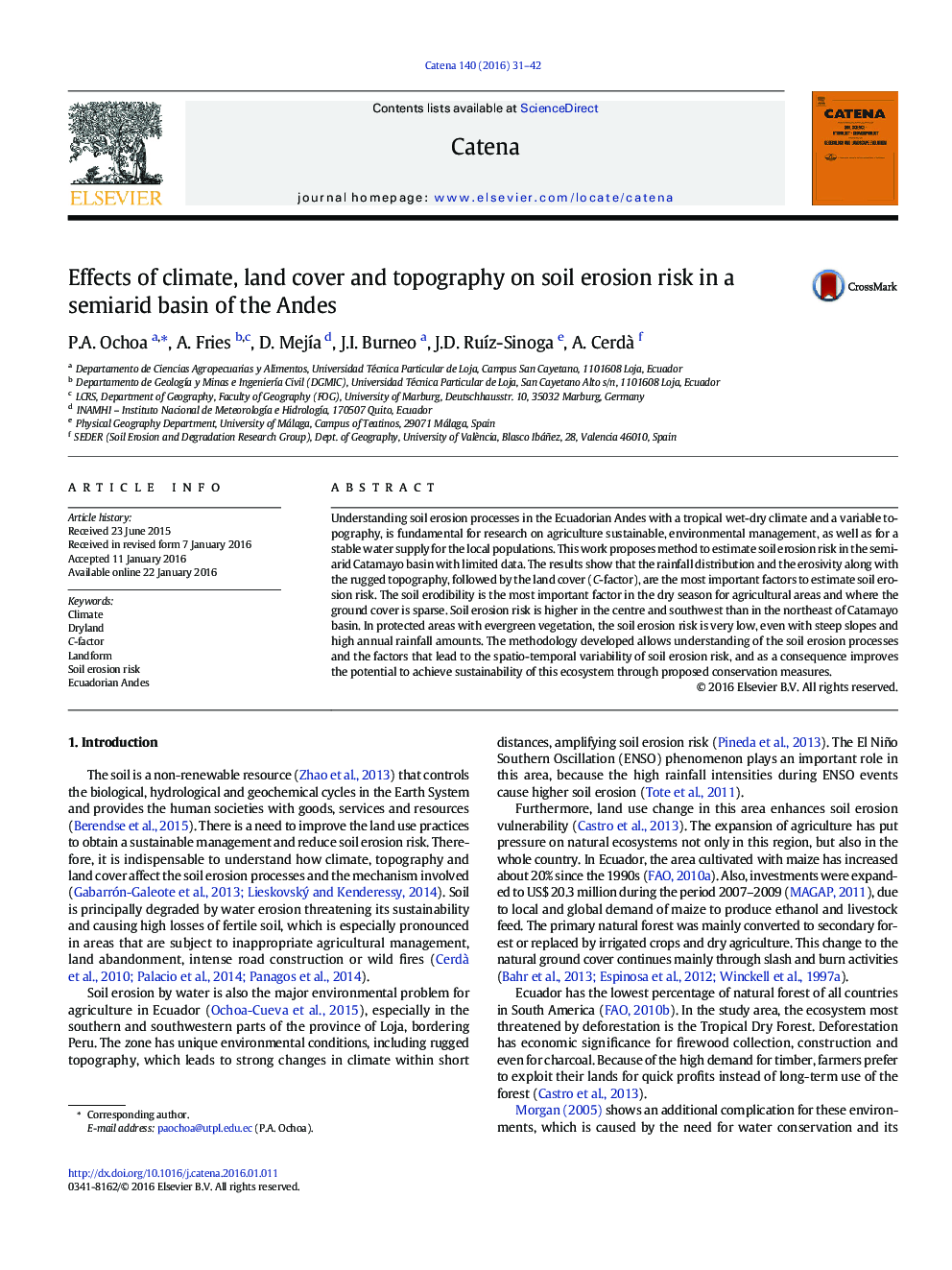| Article ID | Journal | Published Year | Pages | File Type |
|---|---|---|---|---|
| 4570916 | CATENA | 2016 | 12 Pages |
•The relation climate–altitude–topography and their influence over erosivity were analyzed.•The conservation of ground cover is key to preventing soil erosion in tropical dry forest.•Seasonality effects on soil erosion process in semiarid watersheds of the Andes.•The relation between climate, soil and land cover was verified at mountain basin scale.
Understanding soil erosion processes in the Ecuadorian Andes with a tropical wet-dry climate and a variable topography, is fundamental for research on agriculture sustainable, environmental management, as well as for a stable water supply for the local populations. This work proposes method to estimate soil erosion risk in the semiarid Catamayo basin with limited data. The results show that the rainfall distribution and the erosivity along with the rugged topography, followed by the land cover (C-factor), are the most important factors to estimate soil erosion risk. The soil erodibility is the most important factor in the dry season for agricultural areas and where the ground cover is sparse. Soil erosion risk is higher in the centre and southwest than in the northeast of Catamayo basin. In protected areas with evergreen vegetation, the soil erosion risk is very low, even with steep slopes and high annual rainfall amounts. The methodology developed allows understanding of the soil erosion processes and the factors that lead to the spatio-temporal variability of soil erosion risk, and as a consequence improves the potential to achieve sustainability of this ecosystem through proposed conservation measures.
